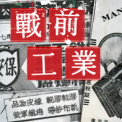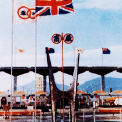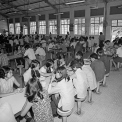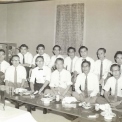Types and usage of paint
We often come into contact with paint on a daily basis. When we are outdoor, paint can be seen on walls of buildings, car's bodies, road signs, lamp posts, railings, pipes, etc. Indoor paints are applied to walls, furniture, electrical appliances, lamp shades, etc., or the castings of cameras, mobile phones, MP3 players, etc., or on toys or models made of plastic or metal. Their surfaces all covered with paint, applied either by spraying, baking or with a paint brush. Paints are used to bring in color, or for the protection of materials to prevent rust and corrosion.
Paints are either oil or water based. Oil-based paints have to be diluted with thinner, turpentine or other organic solvents before use, and are mostly volatile. Common oil-based paints include spray paints and varnish. Spray paints are used on car bodies, while varnish is applied on the surface of wooden furniture. The most common water-based paint is emulsion paint. It can be diluted with water, and does not contain flammable solvent. It dries quickly, and has a resistance to water or rubbing.
In the old days paints were mixed with natural lacquer and color pigments. Modern paints are made of chemical substances. In the 1950s, paint manufacturers in Hong Kong used hundreds of chemical materials to produce paints. They used large machines and employed professional chemists. Nowadays paint industry is part of the chemical industry, with the largest output and types of products.
Characteristics of paint industry and its major enterprises
Paint industry is capital and machinery intensive. To set up a paint factory, large amount of capital is needed for the purchase of land and building of the factory, buying machines and setting up of laboratory, etc., thus in the course of the industry's development, there are only not more than 10 paint plants in Hong Kong. Like plastic industry, paint industry does not produce its own materials but import them to produce its products. In terms of number of factories, employment and export value, paint industry in Hong Kong is small-scale as a whole, much smaller than textile, metalware or plastic industries. However, because of its close ties with other industries, paint industry is important in Hong Kong.
As early as 1930s there were paint factories in Hong Kong. Forebears include China Paint Manufacturing Company (1932) Limited and National Lacquer and Paint Products Company, Limited (now renamed as Camelpaint Chemicals Company Limited). China Paint's products are under its Flower brand, while NLPP has Camel Paint. Duro Paint Company and Island Paint Company Limited were established in 1937 and 1939 respectively. During Japanese occupation of Hong Kong, China Paint, NLPP and Duro Paint remained in operation.
After the WWII, China Paint, NLPP, Duro Paint and Island Paint quickly resumed productions. In 1946, Kin Kwok Lacquer Manufacturing Company Limited became the fifth paint manufacturer. Duro Paint and Oriental Paint from Shanghai were merged. The new Duro Paint was managed under the British company Swire Group. Since the war until 1950s, other paint companies were established, including Hong Kong Paint Products Limited, Chi Lee Paint Factory, Majestic Paint Manufacturing Company Limited and Wan Guo Paint Factory. At that time, except Duro Paint which was under a British company, all paint manufacturers were Chinese owned.
Paint industry's factories, procedures and workers
With small factories, limited machinery and manual operation, paint production output before the war was not high. Later on small factories grew larger. China Paint and Duro Paint started at temporary factories in Sham Shui Po. They then bought land and started to build independent plants. China Paint had its plant on Arran Steet, while Duro Paint was in North Point. Each plant had several floors of space. Island Paint bought a piece of land in Causeway Bay in early 1950s and built its plant there. During the 1950s, the government planned to develop Kwun Tong as a new town. Reclaimed land was designated as industrial use. Six paint manufacturers were relocated to Kwun Tong, including China Paint, Kin Kwok Lacquer, Chi Lee Paint, Hong Kong Paint Products, Nam Va Lacquer & Paint Products Company Limited and Duro Paint. Each built its own factory on purchased land. With ample of space the factories had wide passage ways and safety equipment for the storage of chemical solvents.
Paint factories are easy to catch fire or even explode. Chemical solvents are used for paint production, thus paint factories need to store a large quantity of chemical ingredients. Common solvent for oil-based paint is nitrocellulose. When heated, because of higher indoor temperature, the material catches fire easily. Its flammable nature makes fire an imminent hazard to paint factories. After the war, the government put more emphasis on the safety of paint industry. The relocation of the factories to Kwun Tong made it easier to manage. Plant structure and facilities need to comply with building regulations and safety standards of dangerous goods ordinance.
Production of paint starts with checking the quality of raw materials. The right measurement of materials are then pour into a high speed milling machine to stir, grind, and then stir again before blending and coloring. The paint would then be tested before putting in cans and packaging. The process might sound simple but the stirring, grinding, blending and mixing of color are all machine operated to ensure quality control of the mass produced paints. The machines used in local paint manufacturing are mostly imported, with a small number of facilities supplied by local machinery manufacturer. During the production, cooking and heating are powered by diesel fuel and electricity. Paint manufacturing employs relatively few workers. A study in 1967 found the paint industries at that time employed 828 workers, with male workers accounting for 70%. Male workers took care of the production of paint, while female workers were responsible for packaging and sticking labels on the oil cans.
Chemistry background of the industrial entrepreneurs
Paint manufacturing consists of a few simple steps, yet the organic solvents used are composite chemical products which have numerous ingredients. Chemists in the industry must have sufficient knowledge of chemistry and operating principals of physics and chemistry. In case there is a problem during the production process, fine-tuning would be needed. Coupled with good quality raw materials and product inspection, quality of the paints can then be ensured.
Early founders of Hong Kong's paint manufacturers came from professional chemistry background. They processed the knowledge of production technique. China Paint's founder Lam Kun graduated from the chemistry department of New York's Brooklyn University and worked at a paint factory in New York. NLPP's founder Huang Yang Yin practiced in a paint manufacturer in US. Island Paint's founder Wu Zemin graduated at the chemistry department of University of Washington and worked at the research and development department of a US paint manufacturer. Duro Paint's founder Meng Liang Qi graduated with a Master degree at California, USA.
Second generation paint entrepreneurs also received training chemistry or engineering. For example, the second generation of China Paint, Lam Ting Ball, was graduated from the chemistry department of a tertiary education institute in US. He was also employed by a hi-tech chemical company in the US. During the late 1950s, paint manufacturers had their own lab and hired professional chemist to test paints and the raw materials, and also to develop new products for the market. From 1960s to 1970s, local paint manufacturers signed technical development agreements with their foreign counterparts to bring in advanced technology from overseas to improve the quality of local paints.
Diversification of paint products
Paints produced before the war were only suitable for wooden or metal surfaces. Paints developed after the war became more diversified in terms of products and usage. Outstanding new products included marine paint, emulsion paint and plastic paint. Marine paint was used for local ship building. Emulsion paint was developed after the war. It can be diluted with water and does not require flammable solvents, making it suitable for schools and hospitals. Its usage later widened to exterior walls of buildings. Further improvement also rendered it easier to apply and more durable. Plastic paint was also developed after the war. It can be used for plastic utilities and toys.
During the 1960s, Hong Kong's industry took off, and paint industry expanded its local market. Paints were used for enamel products, warm water bottles, flashlights, electric fans, lanterns and metalware. The rapid development of Hong Kong's toy industry prompted paint manufacturers to develop paints for toys, which complied to the strict limit of lead in paint for toys set by European and American countries. Laminate paint was developed for local renowned camera makers. In the 1970s, local industries and property market developed quickly. Paint manufacturers developed more products to meet with different market requirements, which also fueled the industry's development.
From overseas market to local market
Paints were mostly for export before the war. Since paint manufacturing's raw materials were mostly imported from the UK, paints enjoyed preferential taxation from the Commonwealth. Paints were exported to Commonwealth areas such as Southeast Asia, Australia and parts of Africa. Paints produced in Hong Kong were suitable for humid and warm sub-tropical climate. In the 1950s local paints almost dominated the Southeast Asian market. But since 1960s, Southeast Asian countries started their industrialization. To protect their own industries, tariff and import quota were imposed on foreign products, which affected the foreign markets of Hong Kong paint industry. Until the late 1960s, overseas market only accounted for 40% of paint industry's overall product value.
After the 1960s, local market continued to grow. Paint manufacturers' facilities and quality of products also improved. Preference of the local market shifted from imports from Europe and USA to local products. In the 1960s, 60% of local paint manufacturers were catered to local market. In the 1970s, paints made in Hong Kong gained further local support because of competitive prices and convenient delivery. To develop local market, paint manufacturers used different tactics to attract customers, which included advertisements and taking part in Hong Kong Products Expo (after the war it was renamed as Brands and Products Expo). Duro Paint even participated products expo in the UK to market its products overseas. Before the war, Duro Paint collaborated with Asiatic Lithographic Printing Press, which was founded by Kwan Wai-nung, to produce advertising posters. Arts was then applied to commercial advertising. After the war, Duro Paint continue to use advertising posters to promote its products. Paint manufacturers were eager to consolidate their local market after the war. Promotion tactics became more diversified. Large manufacturers continued to take part in the Brands and Products Expo, engaging celebrities to star in TV commercials with catchy slogans and commercial songs.
Production relocation to China and the decline of paint industry
From 1979 paint industry continued to decline. Some factories were sold or closed, and smaller plants were bought by larger manufacturers. For example Kin Kwok Lacquer was merged with China Paint, Chi Lee Paint was merged with NLPP, while ICI from the UK bought Duro Paint. The overall decline of Hong Kong industry brought the demise of paint industry. Property market prospered while demand for local paints contracted saw earnings of paint manufacturers going south. Paint manufacturers had to sell their land for profit and thus closed their plants. Some moved their production to mainland China.
With industries of Hong Kong moved to mainland China, clients with factories in the mainland placed orders to paint manufactures in Hong Kong, but the paints were used in China. In the 1980s, paint manufacturers started to move to the mainland along with other industries. Nowadays, only China Paint and NLPP remain in Hong Kong but their productions have moved to China as well. Plants are bigger compared to that in Hong Kong, with improvements on plant structure, passage safety and safety equipment which comply to the safety regulations of China. In view of China's booming industry and construction, some manufacturers also target the China market and set up offices in different provinces and cities to promote paints for industrial and construction use. Sales and production increased as compared to before their relocation to China. Since moving their plants to China, paint manufacturers now only have administrative offices in Hong Kong.





